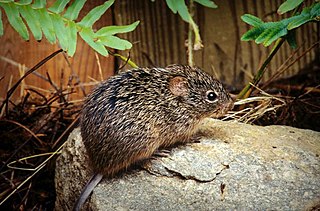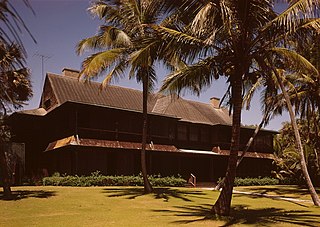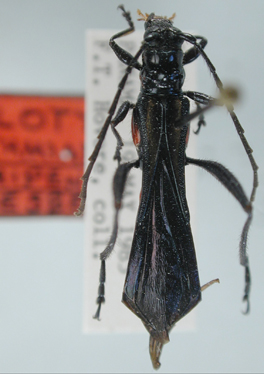Year 45 BC was either a common year starting on Thursday, Friday or Saturday or a leap year starting on Friday or Saturday and the first year of the Julian calendar and a leap year starting on Friday of the Proleptic Julian calendar. At the time, it was known as the Year of the Consulship of Caesar without Colleague. The denomination 45 BC for this year has been used since the early medieval period, when the Anno Domini calendar era became the prevalent method in Europe for naming years.

A cotton rat is any member of the rodent genus Sigmodon. Their name derives from their damaging effects on cotton as well as other plantation crops, such as sugarcane, corn, peanut and rice. Cotton rats have small ears and dark coats, and are found in North and South America. Members of this genus are distributed in the Southwestern United States, Mexico, Central America, and South American countries of: Venezuela, Ecuador, Colombia, Peru, Brazil, Guyana, and Suriname. Many of the species are found in Mexico.

Paranephrops is a genus of freshwater crayfish found only in New Zealand. They are known by the English common names freshwater crayfish and koura, the latter from their Māori name of kōura. The two species are the northern koura, Paranephrops planifrons, found mainly in the North Island, but also in Marlborough, Nelson, and the West Coast of the South Island, and the southern koura, Paranephrops zealandicus, found only in the eastern and southern of the South Island and on Stewart Island/Rakiura. Both species are a traditional food for Māori, and a small koura aquaculture industry supplies the restaurant market.

The Bingham-Blossom House, also known as Figulus, was a historic home and landscaped estate in Palm Beach, Palm Beach County, southeastern Florida. It was located at 1250 South Ocean Boulevard. It was damaged by fire and demolished in 1974.
Miller's striped mouse or the Liberian forest hybomys is a species of rodent in the family Muridae. It is found in Ivory Coast, Guinea, Liberia, and Sierra Leone. Its natural habitats are subtropical or tropical dry forest, subtropical or tropical moist lowland forest, and subtropical or tropical moist montane forest.

The band-tailed hornero, also known as wing-banded hornero, is a species of bird in the Furnariinae subfamily of the ovenbird family Furnariidae. It is endemic to Brazil.
The false-eye seahorse, or flatface seahorse is a species of marine fish of the family Syngnathidae. It is endemic to Australia, from Shark Bay to Broome, where it is found in intertidal rockpools, shallow algae and weedy or rubble reef habitats. It is expected to feed on harpacticoid, calanoid, and cyclopoid copepods, caridean and gammaridean shrimps, and mysids, similar to other seahorses. This species is ovoviviparous, with males brooding eggs in a brood pouch before giving birth to live young.

This is a list of the National Register of Historic Places listings in Palm Beach County, Florida.

Stegastes planifrons is a damselfish from the Western Atlantic. It occasionally makes its way into the aquarium trade.

The southern bottlenose whale is a species of whale, in the Ziphiid family, one of two members of the genus Hyperoodon. Seldom observed, the southern bottlenose whale is resident in Antarctic waters. The species was first described by English zoologist William Henry Flower in 1882, based on a water-worn skull from Lewis Island, in the Dampier Archipelago, Western Australia. They live in deep ocean waters over 1000 meters.

Isthmiade is a genus of beetles in the family Cerambycidae.
Figulus incertus is a species of stag beetle.
Gaius Marcius Figulus was a politician of the Roman Republic who served as praetor in 169 BC, Roman consul in 162 BC, and again as consul in 156 BC. Upon being elected to the praetorship in 169 BC, Figulus received command of the Roman fleets by lot. Later that year, he transported the consul, Quintus Marcius Philippus, to Ambracia so that he could assume command of Roman forces fighting the Third Macedonian War. Figulus himself sailed on to Creusa, then crossed Boeotia by land in a single day to join the rest of the fleet at Chalcis. The only other mention Livy makes of Figulus is a reference to his having assigned part of the fleet to winter quarters at Sciathus, and the remainder at Oreum, in Euboea, which he judged the best location to maintain supply lines to the army in Macedon.

Figulus hornabrooki is a species of Stag Beetle in the beetle family Lucanidae. It is found in Indonesia and Papua New Guinea.

Figulus binodulus is a species in the stag beetle family Lucanidae. It is found in temperate Asia.

Figulus lilliputanus is a species in the stag beetle family Lucanidae. It is found in Australia.

Figulus foveicollis is a species in the stag beetle family Lucanidae. It is found in New Caledonia, New Guinea, and Tahiti.

Figulus punctatus is a species in the stag beetle family Lucanidae. It is found in temperate Asia.












